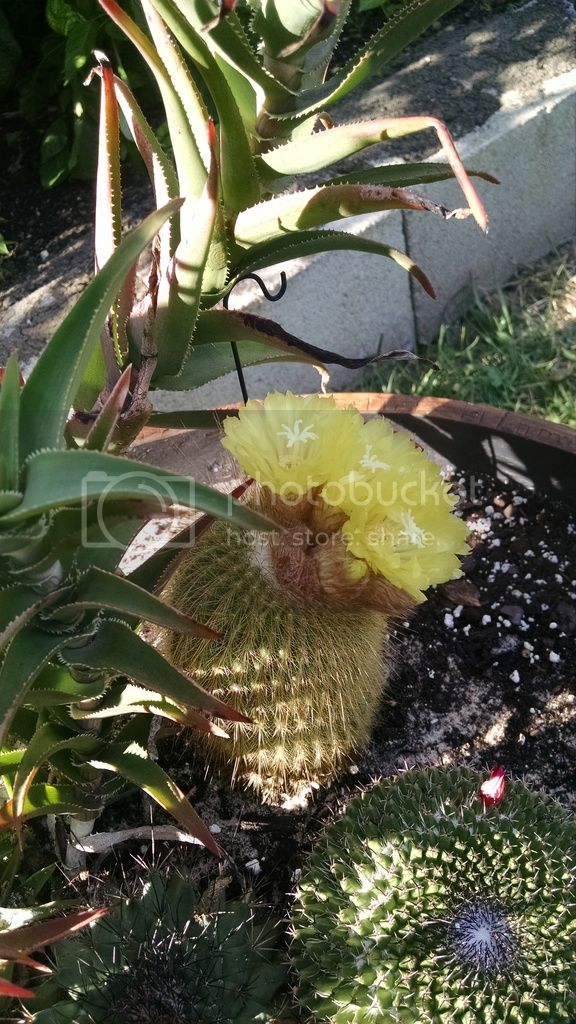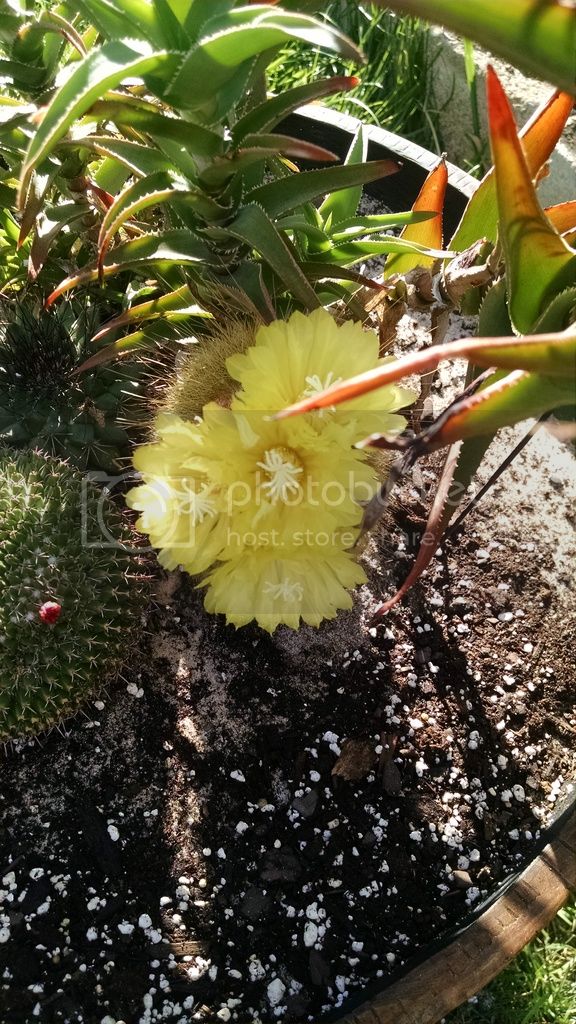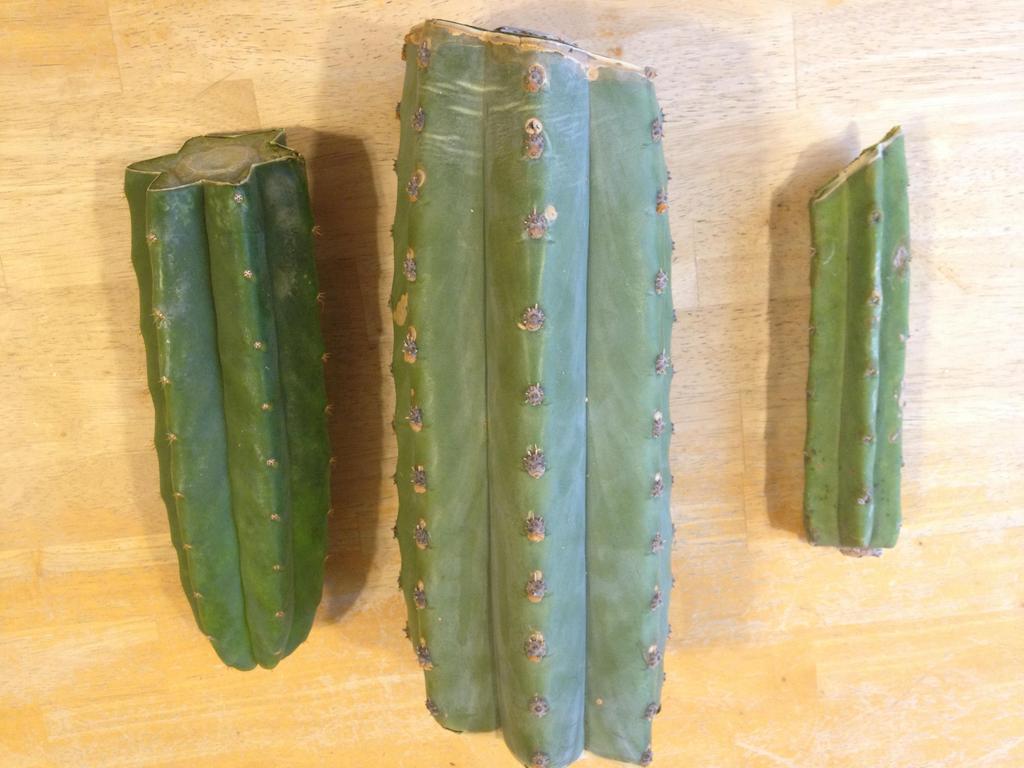-
✅ Expert and friendly hot pepper grow advice.
✅ The latest information on hot pepper varieties.
✅ Reliable seed trading.
✅ Hot sauce recipes and food safety guidance.
✅ Hot sauce business tips for startups.
🌶️ And more!
It's all here, at The Hot Pepper! The Internet's original hot pepper community! Est. 2004.
You are using an out of date browser. It may not display this or other websites correctly.
You should upgrade or use an alternative browser.
You should upgrade or use an alternative browser.
Cacti Thread
- Thread starter dragonsfire
- Start date
Awesome !! lovely flowers 
GhostPepperz said:
Those will grow in Wisconsin?
Yup! This species and a few other in the genus Opuntia are native to much of the CONUS west of the Mississippi. There's one species that grows well into BC, Canada.
O. humifusa tends to be found in disturbed clearings in with deep, sandy soil. I found the plants I took these cuttings from on a south slope of a bluff by the Wisconsin river.
Geonerd said:I think this is some sort of cereus. ID help? It produces long, slender branches with either 3 or 4 sides, and lovely flowers.
They grow well and are dead simple to propagate. Just whack a branch into several segments and plonk them in the ground.
Give them a dash of water and light ferts and they flower like mad.
I can't help with the ID, but those flowers sure are purdy!
Calamari Kid said:They look gorgeous! And I am majorly jealous.
Thanks! I'll try to get some more pics up in the coming days.
alkhall said:I have had these cacti for about four years now.
No clue what cactus this is, but it bloomed yesterday:
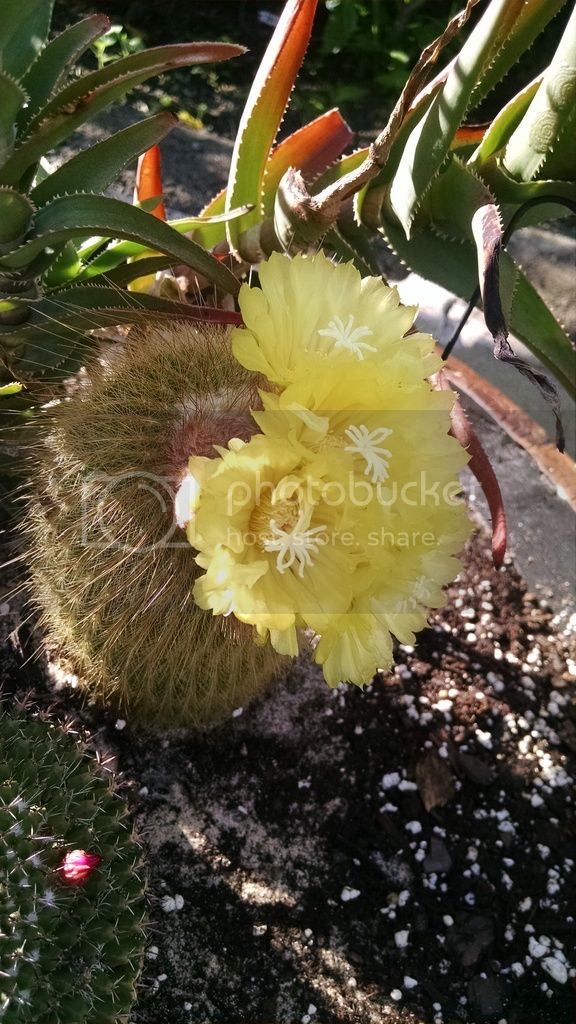
Beautiful flowers! I love all the contrast in a blooming cactus. The plant itself always seems so cold and steeled away from its environment, then a flower emerges and it looks exactly the opposite.
Hybrid Mode 01 said:
Group shot. I cut about 30lbs of top-heavy growth off of them a while back. Hopefully that stubby one second from the right will get the hint and finally send out some pups instead of top growth.
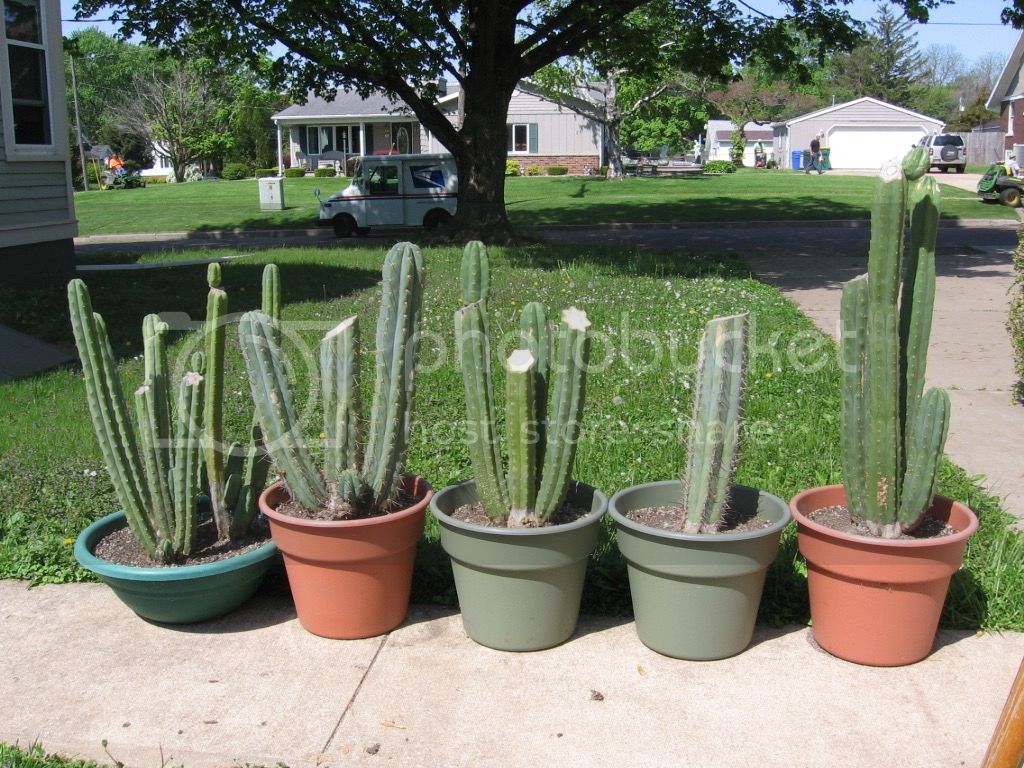
If anybody's interested in growing these species, let me know. I'll give you a chunk and some directions on how to grow them if you pay shipping. Right now, I have T. macrogonus and T. pachanoi pieces cut and callusing. If you've got your heart set on growing the smaller one (T. bridgesii), I can do that but it will take a couple of weeks to allow it to callus before I'll ship.
edit: Actually, some of my cuttings will have to be divided before I can ship them. So more will need to callus. I do have several that are ready to go, though.
Hey Mo, Just thought I would mention both cuttings rooted and are growing nicely and prolly due for their first transplant. THX again bud!
hogleg said:
Hey Mo, Just thought I would mention both cuttings rooted and are growing nicely and prolly due for their first transplant. THX again bud!
Great news! Glad to hear they survived their trip and are taking to their new home. What size containers did you start them in?
Hybrid Mode 01 said:
Great news! Glad to hear they survived their trip and are taking to their new home. What size containers did you start them in?
2gal. The fat one has about a baseball size node (pup?) growing off the top and the smaller one has grown about 4-5 inches
throw up a pichogleg said:
2gal. The fat one has about a baseball size node (pup?) growing off the top and the smaller one has grown about 4-5 inches
So somebody sent you some cactus chunks in the mail...
Here's what I wrote in reply to one of the lucky recipents earlier. I figured I'd paste it here so we can all be on the same page.
I wrote (TOP ^) on the paper wrappers on the ambiguous pieces, but completely forgot to tell you guys to look out for that. Oops. It is kind of hard to describe which end is up without a pic (a pic might be necessary) but I'll try. Each spine cluster is oriented at the top of the bump where it resides. The clusters face up at about a 45o angle. Look closeley at the spine orientation on your tip cuttings (if available) and compare them to those on the middle chunks. Once you see what you're looking at, it should be pretty straightforward.
Oops. It is kind of hard to describe which end is up without a pic (a pic might be necessary) but I'll try. Each spine cluster is oriented at the top of the bump where it resides. The clusters face up at about a 45o angle. Look closeley at the spine orientation on your tip cuttings (if available) and compare them to those on the middle chunks. Once you see what you're looking at, it should be pretty straightforward.
Cactus cuttings can also be simply laid down on the soil horizontally so that about 1" of the log is buried. Roots will grow from wherever the piece is in contact with the soil and pups will grow along the top side.
As far as the white spots go, I'm pretty sure what you're seeing is callus tissue that grew over previous damage. But some pics might be a good idea just so I can help you with any potential problems. Either way, giving the plants a few weeks to callus would be recommended just in case there's damage that we can't see.
San Pedros (and most other Trichocereus cacti) aren't desert plants like other cacti. They're used to deep, freely draining soil with decent nutrient holding capacity that has accumulated at high elevations in mountains formed of calcareous parent strata. They are, however, subject to long dry seasons where no moisture falls for much of the year. These three sentences will tell you the majority of what you need to know when growing them.
Good, high quality organic potting soil with extra perlite (1:3 - perlite:soil) is a good ratio to start with. Even though they aren't desert plants, they don't like prolonged sogginess - the perlite comes in handy during prolonged rainy periods. Also, the perlite is essential for keeping soil from staying too wet while young cuttings are developing root systems. And the added lime brings up the pH and [Ca] of the soil to mimic the influence of the limestone prevalent in their environment.
If you have recently recieved cactus cuttings in the mail and have questions regarding their care, this is the place to ask. And remember, (pics will also greatly help me help you.)
(pics will also greatly help me help you.)
Here's what I wrote in reply to one of the lucky recipents earlier. I figured I'd paste it here so we can all be on the same page.
I wrote (TOP ^) on the paper wrappers on the ambiguous pieces, but completely forgot to tell you guys to look out for that.
 Oops. It is kind of hard to describe which end is up without a pic (a pic might be necessary) but I'll try. Each spine cluster is oriented at the top of the bump where it resides. The clusters face up at about a 45o angle. Look closeley at the spine orientation on your tip cuttings (if available) and compare them to those on the middle chunks. Once you see what you're looking at, it should be pretty straightforward.
Oops. It is kind of hard to describe which end is up without a pic (a pic might be necessary) but I'll try. Each spine cluster is oriented at the top of the bump where it resides. The clusters face up at about a 45o angle. Look closeley at the spine orientation on your tip cuttings (if available) and compare them to those on the middle chunks. Once you see what you're looking at, it should be pretty straightforward.Cactus cuttings can also be simply laid down on the soil horizontally so that about 1" of the log is buried. Roots will grow from wherever the piece is in contact with the soil and pups will grow along the top side.
As far as the white spots go, I'm pretty sure what you're seeing is callus tissue that grew over previous damage. But some pics might be a good idea just so I can help you with any potential problems. Either way, giving the plants a few weeks to callus would be recommended just in case there's damage that we can't see.
San Pedros (and most other Trichocereus cacti) aren't desert plants like other cacti. They're used to deep, freely draining soil with decent nutrient holding capacity that has accumulated at high elevations in mountains formed of calcareous parent strata. They are, however, subject to long dry seasons where no moisture falls for much of the year. These three sentences will tell you the majority of what you need to know when growing them.
Good, high quality organic potting soil with extra perlite (1:3 - perlite:soil) is a good ratio to start with. Even though they aren't desert plants, they don't like prolonged sogginess - the perlite comes in handy during prolonged rainy periods. Also, the perlite is essential for keeping soil from staying too wet while young cuttings are developing root systems. And the added lime brings up the pH and [Ca] of the soil to mimic the influence of the limestone prevalent in their environment.
If you have recently recieved cactus cuttings in the mail and have questions regarding their care, this is the place to ask. And remember,
 (pics will also greatly help me help you.)
(pics will also greatly help me help you.)HM01,
I just received the cacti in the mail today. In one of your other posts, you mentioned the following
"Once your cuttings arrive, unwrap them and put them in a dry, shady spot. Any damage inflicted by the USPS will need a few weeks to dry and callus."
So, when you say "dry, shady spot", does it need light? Can I just lay them out on a table I have in my basement for a week or so before potting them up?
Thanks!
I just received the cacti in the mail today. In one of your other posts, you mentioned the following
"Once your cuttings arrive, unwrap them and put them in a dry, shady spot. Any damage inflicted by the USPS will need a few weeks to dry and callus."
So, when you say "dry, shady spot", does it need light? Can I just lay them out on a table I have in my basement for a week or so before potting them up?
Thanks!
D3monic said:Looks like it's tea time. Wonder how that tastes going down.
I got curious once and licked the end of a fresh cutting.
 I can't imagine actually eating an appreciable quantity would lead to anything positive.
I can't imagine actually eating an appreciable quantity would lead to anything positive. 
bpiela said:HM01,
I just received the cacti in the mail today. In one of your other posts, you mentioned the following
"Once your cuttings arrive, unwrap them and put them in a dry, shady spot. Any damage inflicted by the USPS will need a few weeks to dry and callus."
So, when you say "dry, shady spot", does it need light? Can I just lay them out on a table I have in my basement for a week or so before potting them up?
Thanks!
No light at this point. Your basement would be a great spot to callus them. The dry air will help any damaged areas desicate quickly before any mold spores can set up shop. I would give them two weeks to be on the safe side.
How do they look? Is there any indication of damage? Sometimes it can be hard to see: tiny cracks in midribs, small pokes from spines, damage to callused ends...
If they look the same after a two week rest (no mold or mushy spots developing) they will be ready to root. More on that later...
D3monic said:always been tempted to grow williamsii
Same here. I'd love to grow one to about the size of a golf ball and then graft it onto a T. macrogonus stem. I've read that they grow many times faster with that big root stock attached to them.
bpiela said:Here is a pic. All looks well. They are now resting in my basement.
 Great! They look pretty good. The only spot of any concern to me is that area on the top (actually the bottom) of the macrogonus cutting. Those light colored horizontal marks almost look like an indication that that end of the cutting got squished a bit. Just something to keep an eye on. On the rare chance that it did sustain damage, it should be easy enough to fix in the coming weeks.
Great! They look pretty good. The only spot of any concern to me is that area on the top (actually the bottom) of the macrogonus cutting. Those light colored horizontal marks almost look like an indication that that end of the cutting got squished a bit. Just something to keep an eye on. On the rare chance that it did sustain damage, it should be easy enough to fix in the coming weeks.Also, for your and others' future reference, in this pic, each of your cuttings are upside down. The pachanoi (obviously) has the apical meristem (round end) pointing down. The areolae (spine clusters) on these cacti always face mostly upwards. If you look closely at your cuttings, the ribs have slight serrations running the length of them. The areolae are always positioned near the tip of each bump, facing upwards. Just something to make a note of for when it comes time to plant them.
There. Now they're all pointing up, all is right in the world and my OCD is pacified for the time being. 
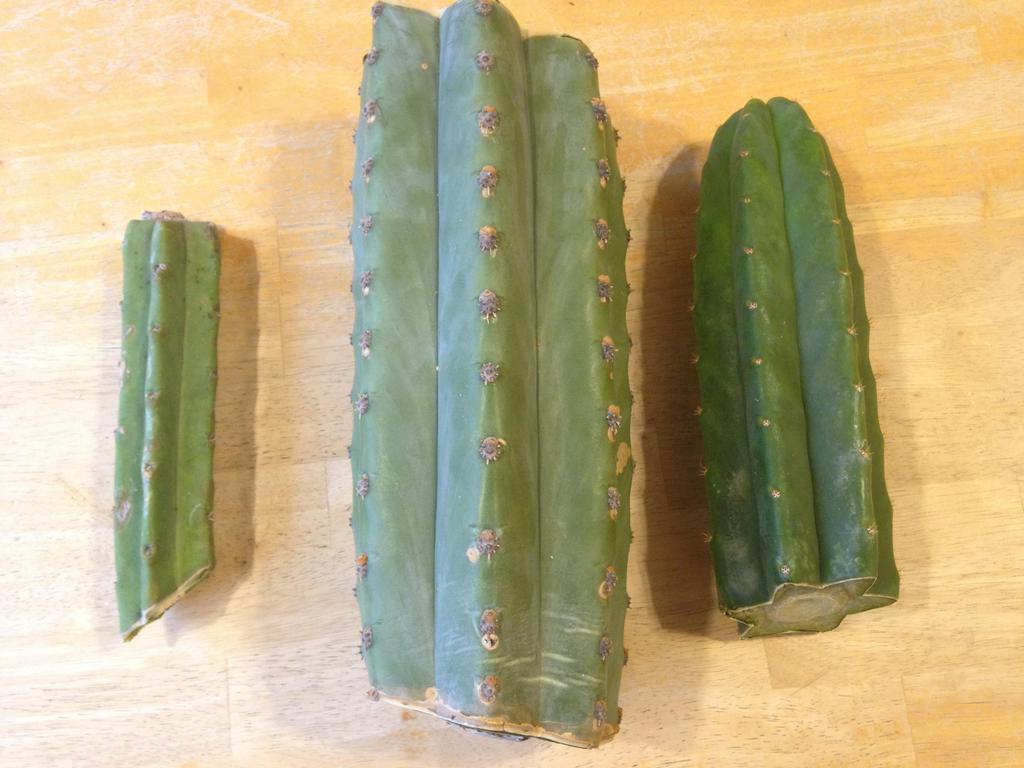

They arrived!
Look in great shape to me. I'll get some soil mixed and ready.
Here's a quick pic. Thank you again. I'll be out hiking again soon. Maybe you would like some of our high desert cacti? I have a place in Aspen I found this cool cacti and a couple spots around Moab as well. I'll rescue them from washouts and abusive hikers.
Look in great shape to me. I'll get some soil mixed and ready.
Here's a quick pic. Thank you again. I'll be out hiking again soon. Maybe you would like some of our high desert cacti? I have a place in Aspen I found this cool cacti and a couple spots around Moab as well. I'll rescue them from washouts and abusive hikers.

